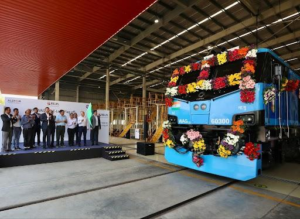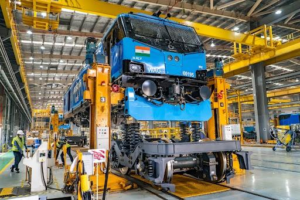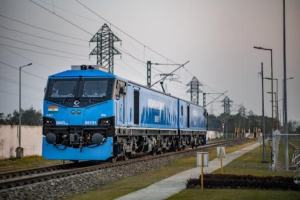
Interview Insights:
Rail Analysis: Alstom’s WAG 12 Electric locos are India’s first freight locomotives designed to run at 120 kmph and are presently operational on the IR network. Please share with us insights into how you are maintaining these locomotives and the complete schedule of the maintenance.?
Mr. Anil Saini: The WAG 12 electric locomotives deliver 12000 HP which makes it the most powerful locomotives to run on Indian tracks with a capability to haul 6000 T of load on steep gradients. The contract to build 800 such locomotives also incorporates the maintenance of these e-locos for over a period of 13 years.
“Alstom has built two ultramodern maintenance depots, in Saharanpur (UP) and Nagpur (Maharashtra) which use predictive technologies to ensure high availability of the e-locos.“
Equipped with modern features, these depots have a pivotal role in maintaining India’s most advanced freight locomotives at significantly lower costs. The depots are equipped with state-of-the-art-machineries, integrated warehouse, and a war room, which are crucial for speedy maintenance. All locos are equipped with IOT-based train-to-ground communication systems, which provide real time information on critical parameters to determine the health of locos in the field round the clock.

The complete route is also geo-tagged, which allows the personnel in the war room to determine the speed, kilometers run, location, and other important operational data for locos running across India. The Centred Fleet monitoring (CFM) system remotely monitors the fleet via HealthHub™ and TrainScanner™. The depots also provides Prompt Response Teams (PRT) across nation, which comprises of trained personnel equipped with tools and critical spares.

In some cases, this team is sent directly to the mainline to attend the requirement, which helps in saving time. The depots also have a fully automated loco wash plant, which completes the process in under 40 minutes, which usually takes half a day if undertaken manually. The Saharanpur depot also has a ‘Training Centre’ equipped with a loco simulator and smart classrooms being used for skill development of railway employees.
Rail Analysis: What are some of the world-class expertise and practices you are adopting whilst maintaining these locomotives for the Railways?
Mr. Anil Saini: Alstom takes maintenance methods a step further than those merely based on routine or preventive servicing. Our innovative approach, HealthHub™, replaces traditional mileage-based maintenance with condition-based predictive maintenance in the WAG 12B.
By utilizing this system, we effectively increase the remaining useful life of rail equipment, reducing preventive maintenance labour by up to 20% and materials consumption by 15%. HealthHub™ integrates advanced data capture solutions like TrainTracer™, an on-board automated diagnostics portal that assesses the condition of crucial train components including converters, transformer and motors in real-time.
Furthermore, it continuously monitors the condition of relevant infrastructure using tools installed on commercial trains and employs predictive analytical techniques to anticipate future maintenance needs. Till date, over 2200 scheduled maintenance services have been successfully conducted, which has helped achieve over 95% availability of e-Locos.
Rail Analysis: Now these locomotives are operational on some of the DFC corridors. Please share how has the client feedback been for these locomotives?
Mr. Anil Saini: Our WAG 12 electric locomotives are powering and accelerating India’s freight revolution. These locomotives have helped decongest the saturated rail tracks by improving the average speed (by at least 20-25 kmph) along with the loading capacity (22.5T axle load upgradable to 25T axle load) of Indian Railways freight trains. The locomotives are capable of running seamlessly on Eastern and Western DFC, which provides high flexibility in operations.
Rail Analysis: What is the schedule for delivering the locomotives for 2023?
Mr. Anil Saini: So far, we have delivered 300+ electric locomotives. We are currently maintaining a production rate of 100 locos per year from Madhepura and are expecting the same delivery rate for 2023 as well.
Rail Analysis: There is a lot of focus on Green Railways in India, how is Alstom achieving this and modernizing trains for the post-carbon era?
Mr. Anil Saini: India has committed to reach net-zero emissions by 2070. In line with this ambition, the country is looking to increase the amount of freight moved by Indian Railways from about 26 percent in 2015 to 45 percent by 2030, while transforming into the world’s first ‘Green Railways’ by 2030.
“Alstom is committed to supporting India’s transition to more innovative, sustainable, and accessible mobility systems.”
Globally, Alstom is bringing innovative zero-emissions solutions to replace diesel trains in non-electrified areas. We are pioneers in hydrogen and battery-operated trains and given our long history of introducing various solutions to transition to green mobility in India, we would be interested to collaborate with Indian Railways on how these solutions could support their carbon neutral roadmaps.

This Interview is a part of our latest Magazine: Subscribe to our Magazine Today!

